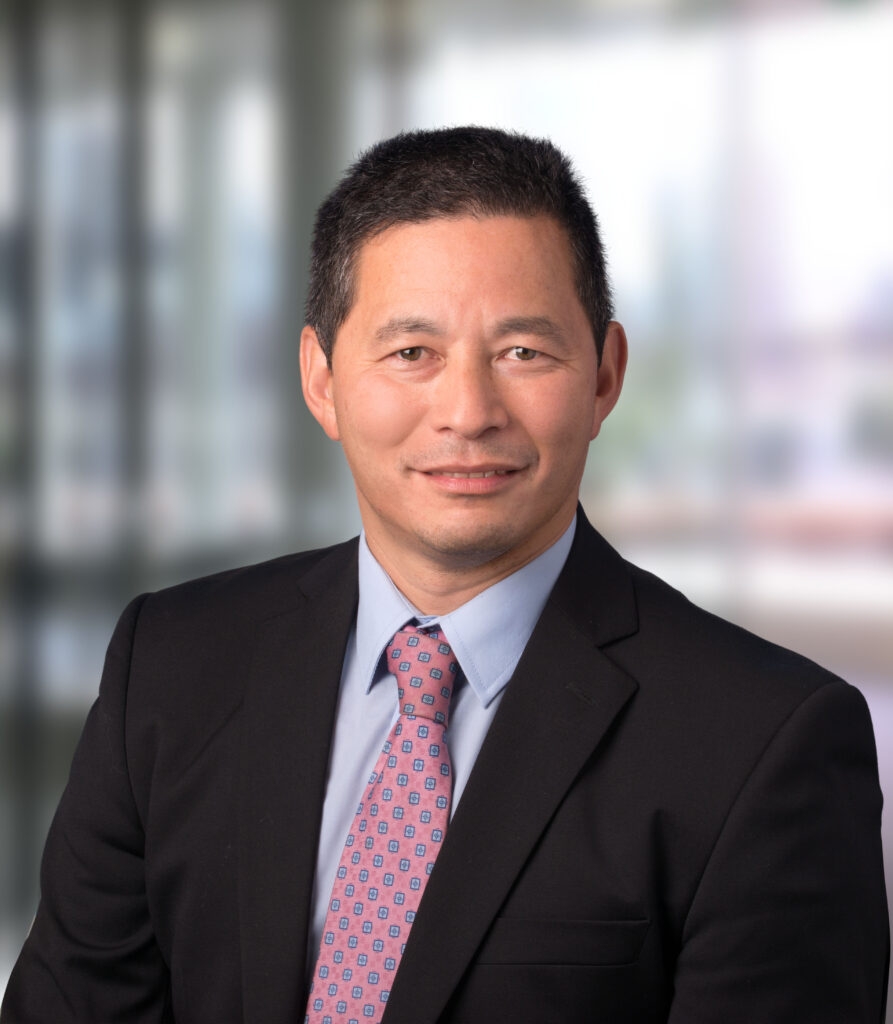Investment strategies for the future: the analysis from our CIO
This article explores BNP Paribas Wealth Management’s forward-looking investment strategies, emphasizing resilience amid global economic challenges. Edmund Shing, CIO BNP Paribas Wealth Management, shares insights on key opportunities across sectors, the cautious integration of AI, and the unique approach needed for the Swiss market.
Published by Handelszeitung / Ringer Medien Schweiz AG
Investment strategies for the future
Wilma Fasola, Handelszeitung
07.11.2024

The aim at BNP Paribas Wealth Management is not to follow every trend but to keep a close eye on the market, and invest on that basis.
Despite the war in Ukraine, tighter financial conditions, mounting geopolitical tensions and slower growth in China, the global economy has held up very well over the past year. The reasons for this, according to Edmund Shing, PhD – Global CIO BNP Paribas Wealth Management, are that “the tightening of financial conditions of 2022/2023 is over, and conditions have improved in recent months. The European Central Bank and more recently the Federal Reserve as well have lowered key rates and, in the US in particular, economic growth has been bolstered by substantial incentives from the US government, in the form of tax credits for investment under the Chips Act and the Inflation Reduction Act.” Furthermore, the impact of the ongoing conflicts in Ukraine and the Middle East on the global economy through energy prices has been limited.
“We expect growth in the US to slow but remain positive, as the tailwind from government spending gradually abates. In Europe, growth could pick up again, as lower interest rates should stimulate industrial activity, and lower inflation rates should boost consumer confidence and spending,” says Shing. “Emerging markets vary greatly in their positioning, so it is impossible to make an overall recommendation for EM equities. BNP Paribas therefore favours cheap, faster-growing EM equity markets such as South Korea, Brazil and Turkey for various specific reasons.”
Getting the right positioning
Given the outlook for lower short and long-term interest rates coupled with a soft landing for the global economy, BNP Paribas favours asset classes such as equities (especially outside the US), investment grade credit and commodities. “This environment is more favourable for mid-cap equities and selected cyclical sectors in particular, including the S&P MidCap 400 index and financial sectors such as insurance,” says Shing. “Falling key rates have historically been positive for the price of gold, so this asset class also remains attractive to us.”
In the expert’s view, the period of inflation has not left a sizeable dent in the balance sheets of central banks, as they had generally previously made strong gains on the back of falling interest rates. “The Bank of Japan, for instance, is currently sitting on huge unrealised gains in its equity ETF portfolio,” says Shing. “The same can be said for the Swiss National Bank, regarding its US equity holdings.” Nevertheless, there is a clear risk that inflation rates both in Switzerland and Europe will generally remain below central bank targets. “This is due to deflation in the prices of goods, weaker energy prices and falling prices for services as wage growth slows. We therefore expect further rounds of synchronised rate cuts by the major central banks over the next 12 months, except for the Bank of Japan,” says Shing.
AI: caution is advised when investing
When it comes to the impact of new technologies such as artificial intelligence (AI) on investment strategies, BNP Paribas recognises the opportunities that exist. “We aim to take advantage of long-term technology shifts; for example, due to the growth of AI data centres and the resulting increase in electricity consumption. One of the best ways to invest in this theme is through the growth of US energy infrastructure; in particular, by investing in power grid infrastructure as the transmission network expands to meet this growth in demand,” says Shing, summing up the situation. Nevertheless, a cautious approach is being taken in relation to the adoption of AI and fintech as digital solutions. “While excitement is centred on generative AI and chatbots akin to ChatGPT, we see a lot of potential in more traditional AI applications in specific areas and are currently trialling a number of AI projects, both at BNP Paribas in general and specifically in Wealth Management.”
Switzerland: a unique market
When it comes to Switzerland specifically, Shing sees a strong focus on currencies, given the long-term trend of appreciation in the Swiss franc, which has diminished the performance of investments traded in foreign currencies. “In addition, we see greater acceptance of certain asset classes such as physical gold in Switzerland, which is not very highly regarded as a diversifier in a multi-asset portfolio,” he says. “In key domestic markets such as France, Belgium and Italy, we can draw on our extensive retail presence; this is a business advantage we do not have in Switzerland, which forces us to take a slightly different approach.” For this reason, BNP Paribas adapts flexibly to the specific requirements of the Swiss market, responding to its particular circumstances such as currency movements, the preference for certain asset classes and also the target group. Shing concludes by saying, “We have a very broad client base, from high-net-worth individuals to ultra-high net worth individuals and family offices. We therefore offer a very broad range of solutions, from the simplest and most liquid investment solutions to highly specialised, less liquid and sophisticated solutions. The key is to offer advice and solutions that match the client’s profile at a reasonable cost – a one-size-fits-all strategy does not work in this industry.”